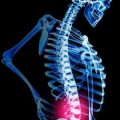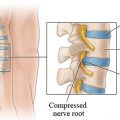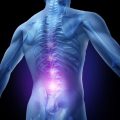Table of Contents
Aging brings a lot of changes to our body, most of which expose us to tons of health risks. One of the most common health risks of aging is the degenerative spine condition; which results to back pain and reduced mobility, a common situation among older individuals. In this article, you’ll learn about spine symptoms.
Degenerative spine condition have different forms, such as slipped disc, herniated disc, osteoarthritis; degeneration of spinal joints and cartilage, narrowing of the spinal canal, spinal stenosis, etc. All these conditions involve gradual loss of the spinal disc’s structure and function. They can be a result of arthritis, infections or tumors.
Symptoms of Degenerative Spine Conditions
The general symptoms of most degenerative spine conditions include:
- Pain (chronic or sharp) experienced with either with movement or at rest (or both).
- Limited motion
- Spinal deformity
- Nerve injuries which leads to feeling of weakness on legs and arms
- Sensory loss or tingling sensation
- Sexual dysfunction
- Bladder and/or bowel control problems
For people experiencing pain in lower back and neck region, degenerative spine symptoms include:
- Pain aggravated by activities may flare up from time to time, but reduces its intensity.
- Pain that differs in intensity, from mild, nagging and irritating, to severe and debilitating.
- Severe pain episodes on neck or back will last for a few days, if not weeks or months.
- Pain aggravated by bending, twisting and lifting
- Pain made worse when in certain positions (i.e. sitting is painful for lumbar degenerative disc pain; as lumbosacral discs are put in pressure three times more than standing).
- When walking feels a lot less painful than prolonged sitting and/or standing
Pain associated with degenerative spine symptoms differ from one person to another; depending on the person’s pain tolerance and severity of the condition. .
Diagnosis for Degenerative Spine Condition
As with other medical conditions that concern the spine, medical practitioners diagnose patients suspected of degenerative spine condition through conducting a series of tests and requiring for imaging tests; such as x-rays, MRI and CT scan for the spine. CT scan is usually used to resolve inconsistencies between the MRI scan and symptoms of the patient.
Treatments for Degenerative Spine Condition
Treatment methods for degenerative spine conditions of course, depend on the doctor’s diagnosis; including the type of the condition, exact location of the damaged spinal disc, and the severity of the damage.
In most cases, conservative and non-surgical treatments can suffice in alleviating the pain and managing inflammation. Doctors usually prescribe over-the-counter pain relievers, non-steroidal anti-inflammatory drugs, or epidural injections for serious pain.
Doctors also usually recommend physical therapy, which includes specific exercises for strengthening and stretching the spine.
For severe cases of spine degeneration such as herniated discs and spinal stenosis, doctors may require surgical operation to free patients from pain for good.






 I love to write medical education books. My books are written for everyone in an easy to read and understandable style.
I love to write medical education books. My books are written for everyone in an easy to read and understandable style.